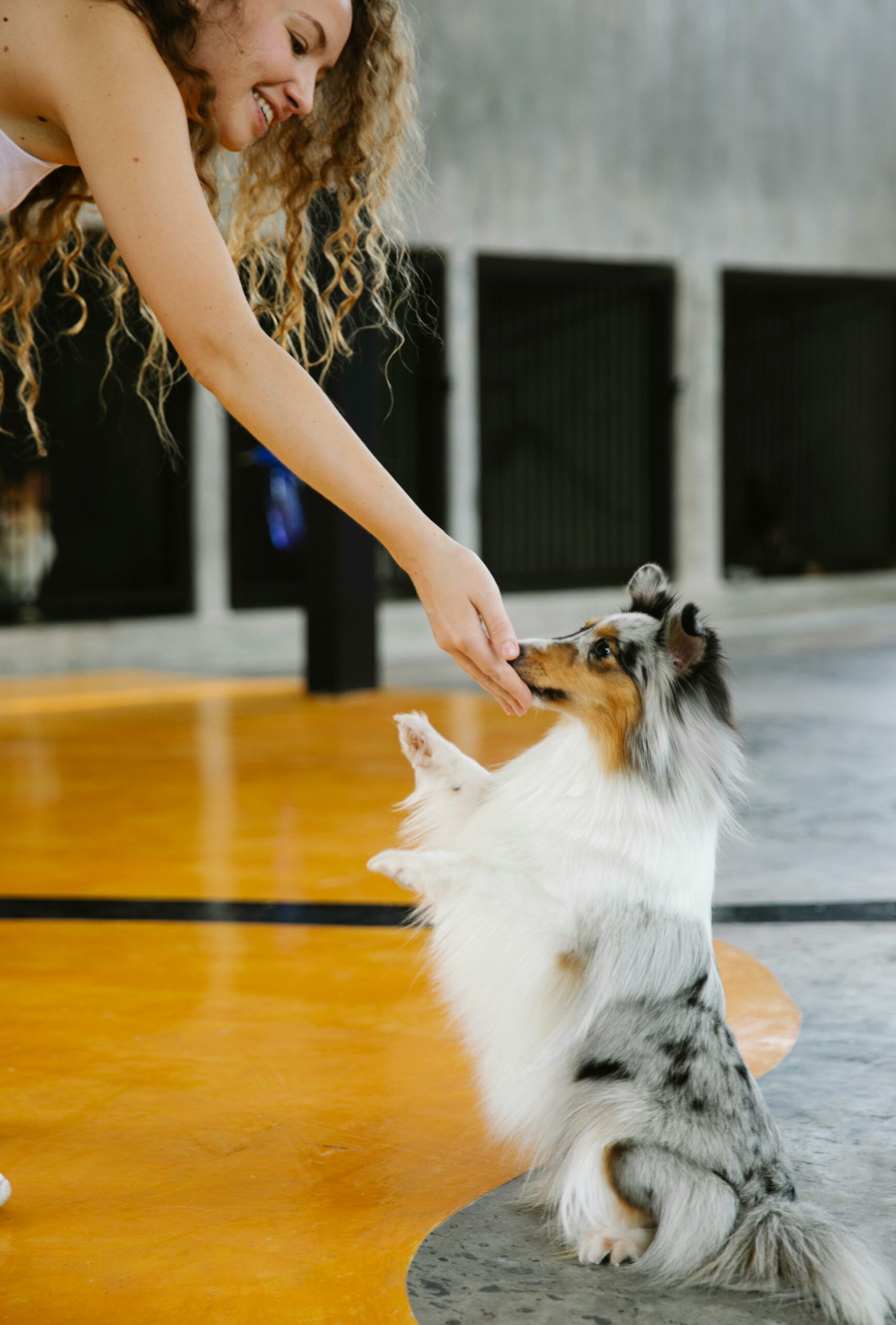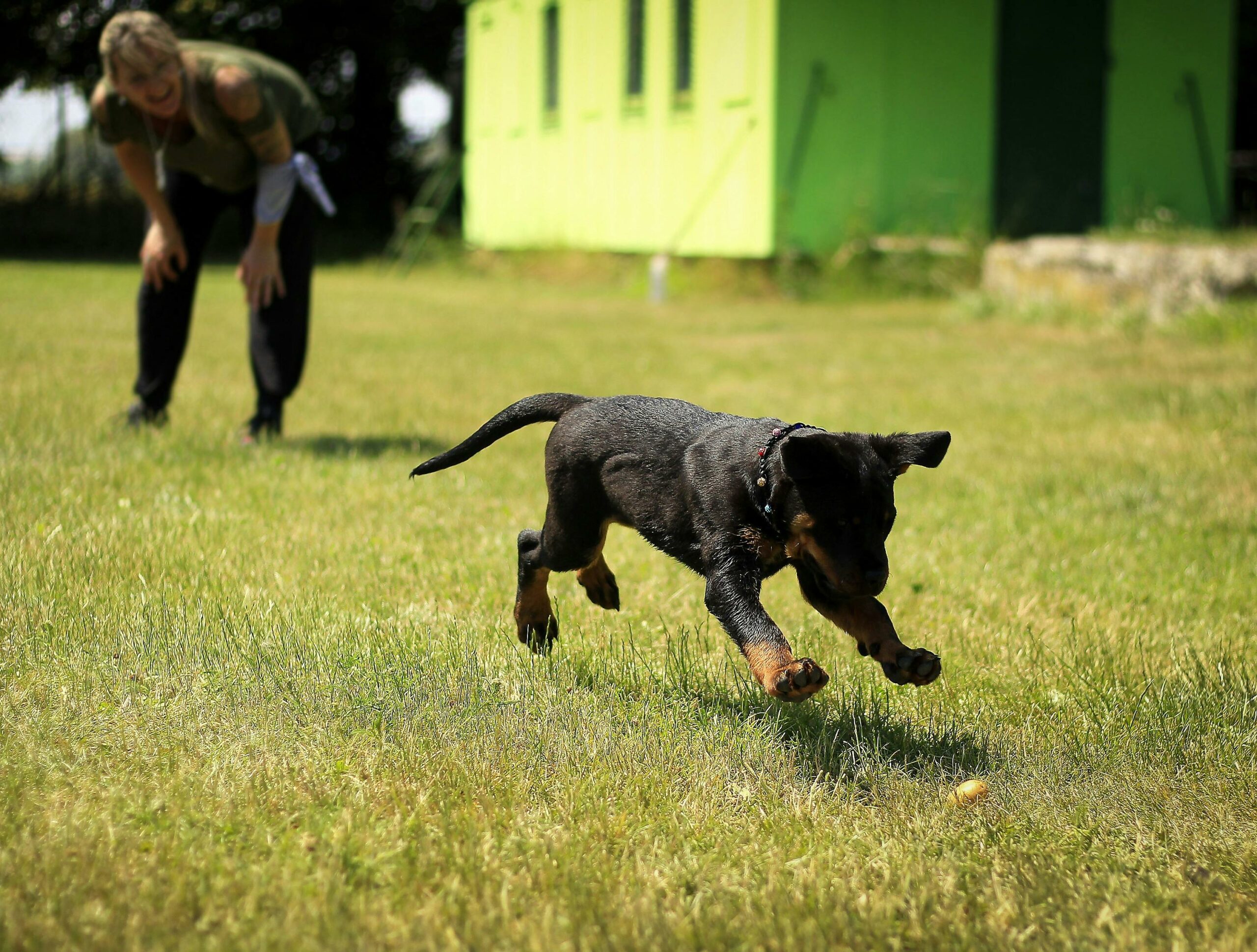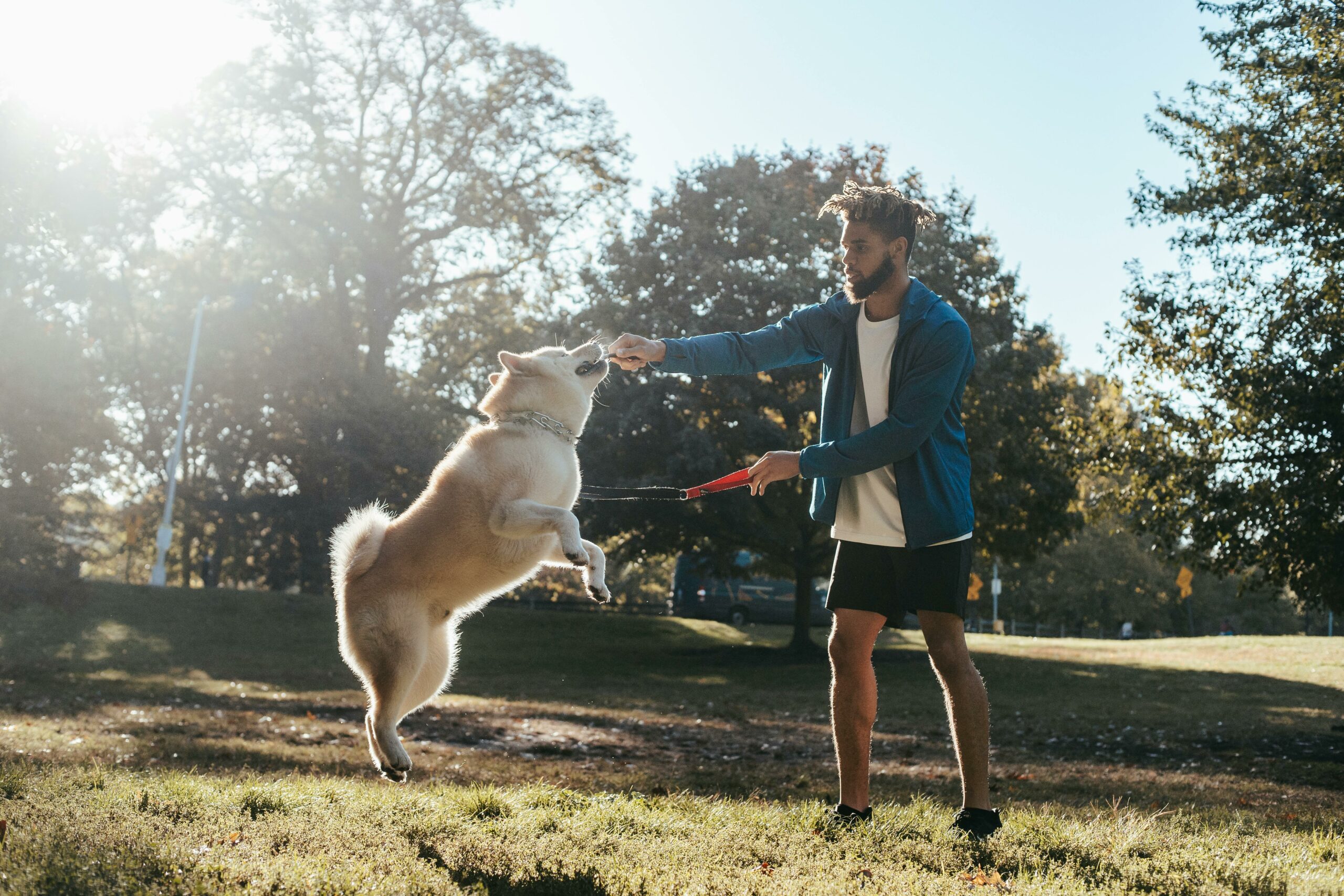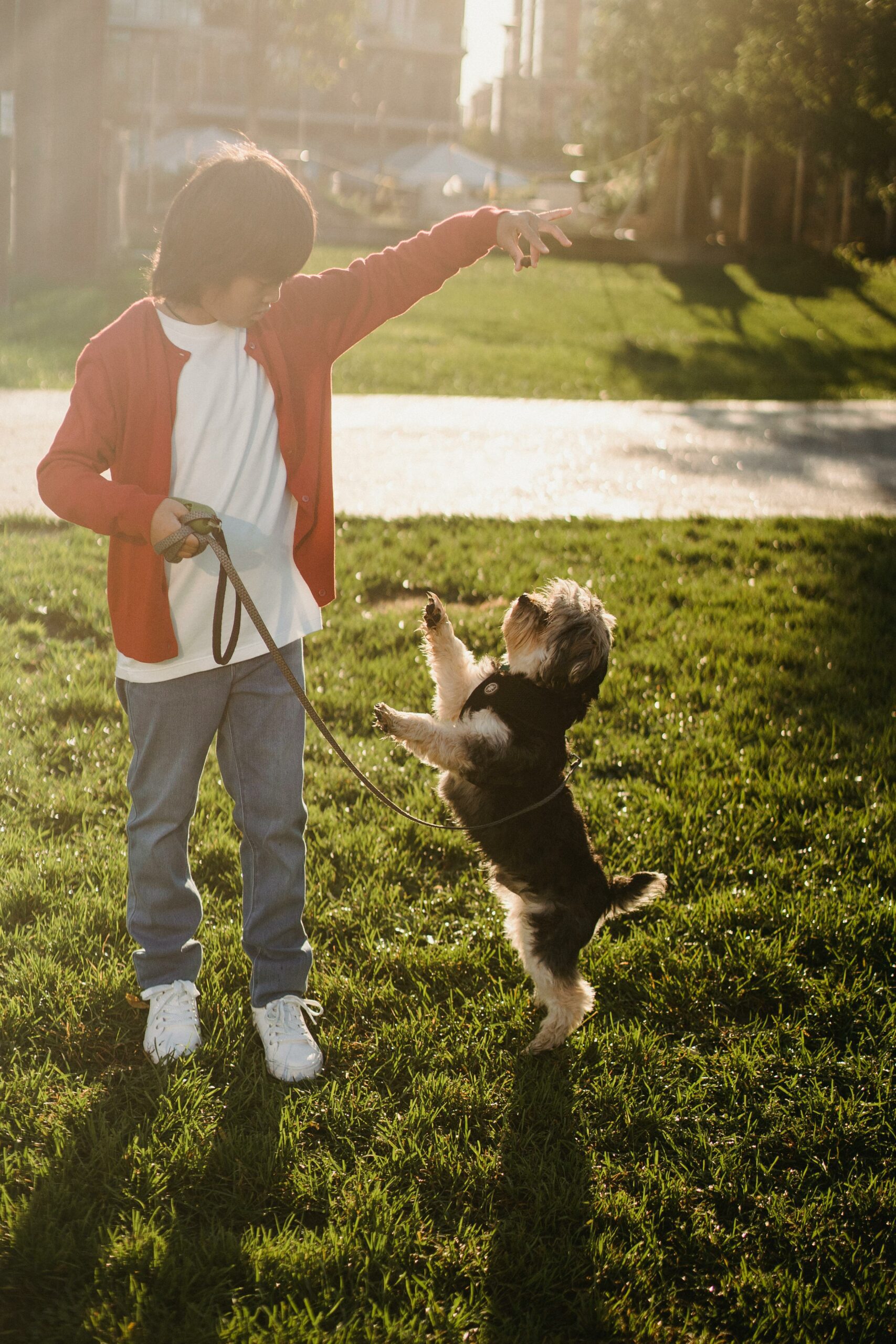Force-free dog training focuses on positive reinforcement, while balanced training incorporates both positive and corrective methods. Force-free training emphasizes rewarding desired behaviours, while balanced training includes corrections for unwanted behaviours along with positive reinforcement.
Both approaches aim to train dogs effectively, but the methods used differ significantly. Force-free training prioritises building a strong bond and trust between the dog and the trainer, while balanced training seeks to establish clear boundaries and rules for the dog to follow.
Understanding the distinction between these two training methods can help dog owners choose the approach that aligns best with their training goals and beliefs.
The Philosophy Of Force-free Dog Training
When it comes to training dogs, there are two main schools of thought: force-free training and balanced training. Force-free dog training is based on the principle of positive reinforcement, while balanced dog training uses a combination of positive and negative reinforcement. In this post, we’ll be focusing on the philosophy of force-free dog training and the principles that make it effective.
Principles Of Positive Reinforcement

The main principle of force-free dog training is positive reinforcement. This means rewarding the dog for good behaviour and ignoring or redirecting unwanted behaviour without using physical force or punishment. Positive reinforcement can take many forms, including treats, toys, praise, and attention. The idea is to make the dog associate good behaviour with positive outcomes, making it more likely to repeat that behaviour in the future.
The Role Of Rewards In Training
Rewards are an essential part of force-free dog training. They act as motivators and help to reinforce good behaviour. Rewards can be anything that the dog finds enjoyable, such as food, toys, or playtime. It’s important to choose rewards that are appropriate for the dog and the behaviour being reinforced. For example, if you’re trying to teach your dog to come when called, a high-value treat like a piece of chicken may be more effective than a pat on the head.
Using Positive Reinforcement To Solve Behaviour Problems

Force-free dog training can be used to solve a wide range of behaviour problems, from barking and jumping to aggression and separation anxiety. The key is to identify the root cause of the behaviour and use positive reinforcement to address it. For example, if your dog barks when left alone, you could use positive reinforcement to teach them that being alone is a positive experience. This might involve giving them a special toy or treat when you leave, or gradually increasing the amount of time they spend alone while rewarding them for calm behaviour.
Force-free dog training is a humane and effective way to train your dog. By using positive reinforcement and rewards, you can teach your dog good behaviour without resorting to physical force or punishment. Whether you’re teaching your dog basic obedience or addressing a behaviour issue, force-free training can help you achieve your goals while strengthening the bond between you and your furry friend.
The Balanced Dog Training Approach
Find the Balanced Dog Training Approach for a harmonious bond with your pet. Unlike Force-Free training, Balanced Training incorporates positive reinforcement with appropriate corrections for effective behaviour modification. This method ensures a well-rounded training experience for your furry companion.
The Balanced Dog Training Approach focuses on using a combination of positive and negative reinforcements to train dogs effectively. This approach recognizes that each dog is unique and may respond differently to various training methods.
Combining Positive And Negative Reinforcements
In balanced dog training, trainers use a mix of rewards (positive reinforcement) and corrections (negative reinforcement) to guide the dog’s behaviour. Positive reinforcement involves rewarding good behaviour with treats or praise, while negative reinforcement may include gentle corrections to discourage unwanted behaviours.
Understanding Corrections In Balanced Training
Corrections in balanced training are used to redirect unwanted behaviours without causing harm or fear to the dog. Trainers focus on teaching the dog what is expected of them through clear communication and consistency. Corrections are meant to guide the dog towards making better choices, rather than instilling fear or confusion.
Historical Perspectives On Dog Training Methods
Evolution Of Training Techniques

Dog training has evolved significantly over the years. In the past, force-based methods were commonly used to control and shape a dog’s behaviour. This involved the use of physical punishment, such as choke chains and shock collars, to compel the dog to comply with commands. These methods were rooted in the belief that dogs needed to be dominated and shown who is in charge. The focus was on obedience through fear and intimidation.
Modern Shifts In Training Ideologies

With the advancement of research in animal behaviour and psychology, a more balanced approach to dog training has gained popularity. Force-free training, also known as positive reinforcement, emphasizes rewarding desired behaviours rather than punishing undesired ones. This approach is based on building a strong bond of trust and respect between the dog and the owner, using treats, toys, and praise to motivate and reinforce good behaviour. It focuses on understanding the dog’s instincts and learning abilities, promoting a cooperative and willing attitude in the dog.
Behavioural Outcomes Of Different Training Methods
When it comes to training, your furry friend, understanding the difference between force-free and balanced dog training is essential. The behavioural outcomes of these methods can have a significant impact on your dog’s long-term behaviour and the relationship between you and your pet.
Long-term Effects On Dog Behaviour

Force-free training focuses on positive reinforcement and rewards to encourage desired behaviours, leading to long-term positive effects on a dog’s behaviour. This method aims to build trust and confidence in the dog, resulting in a well-adjusted and obedient pet.
Balanced training, on the other hand, may involve the use of both positive reinforcement and corrections. While it can yield immediate results, it may lead to long-term behavioural issues, such as anxiety or fear-based responses in dogs.
Impact On Dog-human Relationship
Force-free training fosters a strong bond and trust between the dog and its owner. By using positive reinforcement, it creates a harmonious relationship based on mutual respect and understanding, enhancing the dog-human bond.
Balanced training may lead to a strained relationship, as the dog might perceive the owner as a source of both rewards and corrections, causing confusion and potential distrust in the relationship.
Critiques And Concerns In Dog Training
Dog training methods have long been a subject of debate, with proponents of force-free training and balanced training each advocating for their preferred approach. However, the controversies surrounding aversive techniques and the welfare implications in training have raised significant concerns in the dog training community.
Controversies Surrounding Aversive Techniques

Aversive techniques, often associated with traditional or balanced training methods, have sparked controversies due to their potential to cause fear, anxiety, and stress in dogs. Critics argue that these methods, which may include the use of physical corrections or punitive tools, can lead to adverse behavioural and emotional outcomes for the animal.
Proponents of force-free training emphasize the negative impact of aversive techniques on the human-dog bond, highlighting the potential for eroding trust and creating a confrontational dynamic between the trainer and the dog.
Welfare Implications In Training
The welfare implications of different training methods are a key point of concern within the dog training community. Force-free proponents argue that prioritizing positive reinforcement and reward-based training not only leads to more effective and lasting behaviour changes but also promotes the overall well-being of the dog.
Conversely, critics of force-free training express concerns about potential limitations in addressing severe behavioural issues or working with certain breeds or individual dogs that may require a more nuanced approach. They argue that balanced training, when implemented with proper care and expertise, can provide necessary structure and guidance for dogs, leading to a balanced and well-adjusted pet.
Choosing The Right Trainer For Your Dog
Assessing Qualifications And Philosophies
When it comes to training, your furry friend, it’s crucial to understand the differences between force-free and balanced dog training. Force-free training focuses on positive reinforcement and building a strong bond with your pet, while balanced training incorporates a mix of positive and corrective techniques. The approach you choose can significantly impact your dog’s well-being and behaviour.
- Relies on positive reinforcement
- Emphasizes building trust and cooperation
- Avoids physical punishment or intimidation
- Uses a combination of positive reinforcement and corrections
- Addresses unwanted behaviours through balanced techniques
- May involve the use of tools such as prong collars or e-collars
Before selecting a trainer, it’s essential to assess their qualifications and training philosophies. Look for certifications from reputable organizations, such as the Certification Council for Professional Dog Trainers (CCPDT) or the International Association of Animal Behaviour Consultants (IAABC). Additionally, inquire about their training methods and ensure they align with your preferences and values.
Questions To Ask A Potential Trainer

When evaluating potential trainers, asking the right journeyions is crucial in determining the best fit for your dog’s needs. Consider inquiring about the following:
- Training Philosophy: Ask about their approach to training and how they handle behavioural issues.
- Certifications and Experience: Inquire about their qualifications, certifications, and experience working with dogs.
- Tool Usage: If considering balanced training, ask about the use of tools and their rationale for their application.
- Client References: Rejourney references from previous clients to gain insight into the trainer’s effectiveness.
- Training Environment: Assess the training environment and ensure it is conducive to your dog’s learning and comfort.
Tools And Equipment In Dog Training
When it comes to training, your furry friend, the tools and equipment you use play a crucial role in their learning process. Understanding the difference between force-free and balanced training methods can help you choose the most suitable approach for your dog.
Force-free Training Aids

Force-free training relies on positive reinforcement and reward-based techniques to encourage desired behaviour in dogs. The tools used in force-free training are designed to motivate and incentivize your pet without the need for physical or psychological coercion.
- Clickers
- Treat pouches
- Interactive toys
Balanced Training Tools
Balanced training combines both positive reinforcement and appropriate corrections to guide a dog’s behaviour. The tools used in balanced training are aimed at maintaining a balance between rewards and corrections to achieve desired outcomes.
- Prong collars
- E-collars
- Slip leads
Case Studies: Force-free Vs. Balanced Training
Explore the difference between force-free and balanced dog training through real-life case studies. Find the impact of each approach on canine behaviour and well-being. Gain insights into the effectiveness of force-free and balanced methods in shaping positive and lasting behavioural changes in dogs.
Dog training methods have evolved over the years, and two popular approaches are force-free and balanced training. Force-free training is a positive reinforcement-based approach that rewards good behaviour, while balanced training involves using both positive and negative reinforcement. Let’s have a closer look at how these two methods differ by examining some case studies.
Success Stories Of Force-free Training
Force-free training is all about positivity and rewards. This method focuses on teaching dogs good behaviour rather than punishing bad behaviour. A success story of force-free training is with a dog named Max. Max had a history of being aggressive towards strangers and other dogs. His owners decided to try force-free training, and after only a few weeks, Max’s behaviour improved significantly. He was no longer aggressive and had become a much calmer and happier dog.
Another example is with a dog named Bella, who had separation anxiety. Her owners tried balanced training at first, but Bella’s anxiety only got worse. They switched to force-free training, which involved giving Bella treats and praise when she was calm and relaxed. After a few months, Bella’s anxiety improved, and she was able to stay home alone without any issues.
Balanced Training In Practice

Balanced training involves using both positive and negative reinforcement to teach dogs good behaviour. A case study of balanced training is with a dog named Rocky, who was aggressive towards other dogs. His owners used a combination of positive reinforcement, such as treats and praise, and negative reinforcement, such as a gentle tug on the leash, to teach Rocky to be more social. After a few months of training, Rocky was able to play with other dogs without any aggressive behaviour.
Another example is with a dog named Zeus, who had a habit of jumping on people. His owners used a combination of positive reinforcement, such as treats and praise, and negative reinforcement, such as turning away from him when he jumped, to teach him not to jump. After a few weeks of training, Zeus stopped jumping on people and became a well-behaved dog.
In conclusion, force-free and balanced training are two popular methods of dog training. While force-free training focuses on positivity and rewards, balanced training involves using both positive and negative reinforcement. Both methods have their pros and cons, and it’s up to the owners to decide which approach is best for their dog.
Frequently Asked Questions
Why Is Force-free Dog Training Better?
Force-free dog training is better because it focuses on positive reinforcement rather than punishment. It strengthens the bond between dog and owner, leading to more effective and lasting results. This method is humane, ethical, and promotes a trusting relationship with your furry companion.
What Does Balanced Dog Training Mean?
Balanced dog training involves using a combination of positive reinforcement and correction techniques to address behaviour.
What Is A Force-free Dog Trainer?

A force-free dog trainer uses positive reinforcement techniques to train dogs without punishment or intimidation. This approach focuses on building trust and a strong bond between the trainer and the dog. It aims to create a happy and willing learner, leading to better behaviour and obedience.
Which Dog Training Method Is Best?

The best dog training method is positive reinforcement, using rewards like treats and praise to reinforce desired behaviours.
In choosing between force-free and balanced dog training, it’s essential to understand the approach that best suits your canine companion’s needs. Both methods have their merits, but the key lies in finding the right fit for your dog’s temperament and behaviour.
Ultimately, the goal is to foster a positive and fulfilling relationship with your furry friend.
